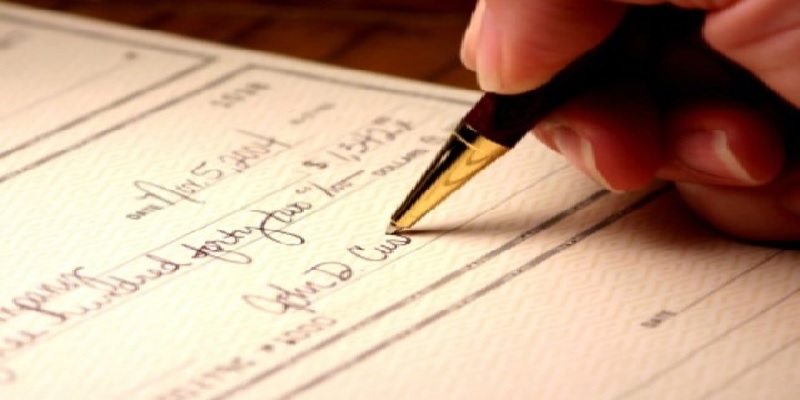 When you get a check, it has to be endorsed for you to get the money that is written out to you. In other words, endorsing a check means you must sign the back and cash or deposit it into your bank account. Normally, check endorsements will allow people and banks to specify different ways of depositing. I’ll go over how to endorse your check and other details below.
When you get a check, it has to be endorsed for you to get the money that is written out to you. In other words, endorsing a check means you must sign the back and cash or deposit it into your bank account. Normally, check endorsements will allow people and banks to specify different ways of depositing. I’ll go over how to endorse your check and other details below.
 |
 |
How to Endorse a Check Correctly
There are different ways you can endorse a check depending on how it was written. First, wait until you are ready to deposit or cash your check into your bank account. Then, go to the back of the check and look for “Endorse Here.” Once you find that, just sign your name on that top line and you’re ready to go.
By doing this, it’s called a “blank endorsement.” It’s a good idea to sign a check until right before you need to deposit it. Since it is an endorsed check, if you sign it too early, anyone else can cash it if they find it. Normally, financial institutes will only cash and deposit checks that are given to them by the account holder. But, it’s better to be safe rather than sorry.
Signing a Check to Someone Else
Theoretically, once someone writes a check to you, you’re able to sign the check to someone else if you wanted. This is known as a “special endorsement.” To do this, you must go to the back of the check and find the top lines. Write “pay to the order of (insert persons name here)” on those lines. Then you just have to sign your name on the next line to endorse the check to someone else.
Remember, banks and credit unions take a risk when they cash this type of check. Since anyone can sign the check and fill in the endorsement information by themselves. For this specific reason, not all financial institutes will take those types of checks.
Endorsing a Check for Deposit Only
When you endorse a check for deposit only, this will limit the ability to cash it. This is also known as a “restrictive endorsement.” By doing this, it’s more protected than a blank endorsement since it restricts what you can do with the check. Just turn the check over to the back. Then, on the top lines write “for deposit only to account number XXX.” After, just sign your name on the next line over and you’re ready to go.
Just remember to sign your check in the endorsement box. If you have problems finding it, it will be located above the “Do not sign, write, stamp below this line.”
Normally, it’s better to endorse a check even if you write it for “deposit only.” This will allow your financial institute to confirm your signature. This is a very important security protocol that will help avoid problems if there are any.
What Happens When Your Check Isn’t Endorsed
If you forget to endorse your check it’s not the worst thing if you deposit a check without signing it. Just contact your bank and ask what you should do next. Depending on your bank or credit unions rules and regulations, will make the result vary. There is a possibility that your bank will endorse it for you. Others my decline your check and return it to you so you can endorse it.
Plus, keep in mind there are some banks that hold funds longer to make sure that the check will be processed. However, it’s always better to sign and endorse your checks for your safety.
Conclusion
Now, when you get a check you know what to do to endorse and deposit it. Rather or not if you want to endorse it to someone else or cash it, this is a basic guide of how to do it correctly. I would recommend signing your check right before you deposit it into your bank account. If you have any other questions, it’s best to contact your bank or credit union directly.


